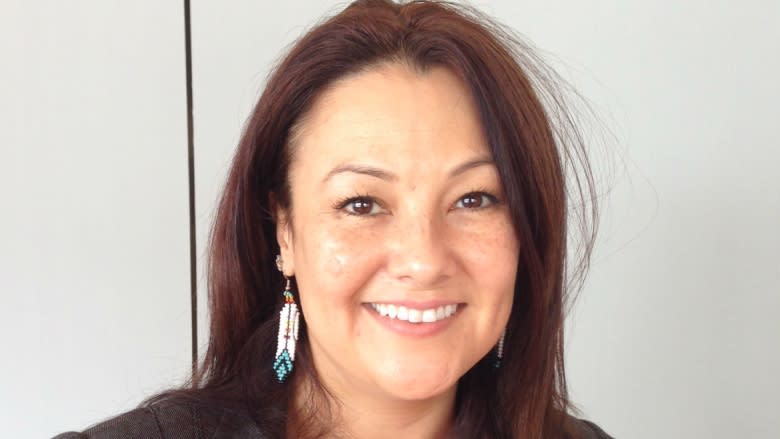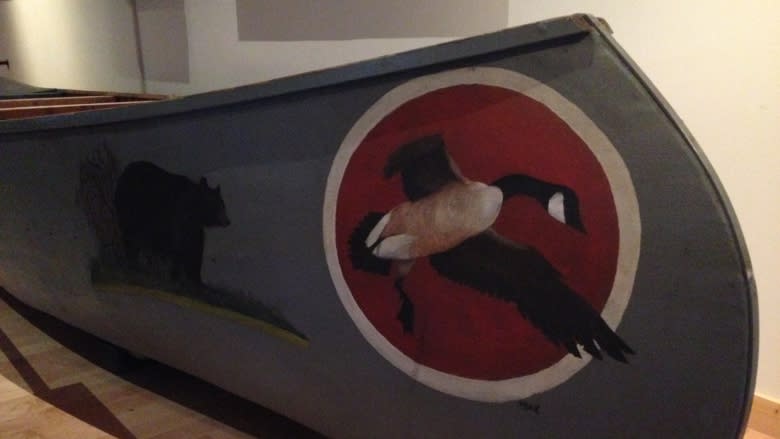Northern Quebec Cree community celebrates 25th anniversary of Odeyak voyage
It was 25 years ago today that 60 Inuit and Cree from Northern Quebec paddled their Odeyak into New York City, a blue and green Earth Day flag fluttering at the bow.
The Odeyak is a canoe-kayak hybrid built in 1990 in Whapmagoostui/Kuujjuarapik, a Cree/Inuit community on the Hudson Bay coast.
It was created to symbolize the two nations' fight against the flooding of their territory for a hydroelectric megaproject.
"We are the people you never hear about until you want something from us," said Grand Chief Matthew Coon Come at a stop in Ottawa during the Odeyak's voyage 25 years ago.
"We are the victims of environmental racism."
Today, Cree leaders and youth are gathering at the Aanischaaukamikw Cree Cultural Institute in Oujé-Bougoumou, a nine-hour drive north of Montreal, to commemorate the 25th anniversary of the Odeyak voyage and its impact on Cree relations with government and development.
Sarah Pashagumskum, from the Cree Nation of Chisasibi, was just a teenager when the Odeyak was launched.
"I remember being amazed that there was so much media coverage," Pashagumskum said.
"I remember being proud that there were people from our communities out there in the world, taking on this great responsibility and this really big mission, and just bringing our voice out to the world."
The Odeyak travelled more than 2,000 km over five weeks, by dogsled on the frozen bay, by road and by river, all the way to downtown Manhattan in a campaign against the proposed damming of the Great Whale River.
The $12.6-billion Great Whale project wound have diverted eight large rivers and affected an ecosystem the size of France. Hydro-Québec planned to sell electricity from that project to New England and New York State.
Indigenous activists figured the way to stop that was to get American citizens on their side.
"It was hard to imagine what the result would be because this was something we'd never done," says Matthew Mukash, one of the Cree strategists and paddlers on that voyage.
It was a public relations move that paid off. The Odeyak, and the message it brought, got the attention of media and environmentalists around the world.
"The news spread like wildfire," says Mukash, who would later serve as Grand Chief.
"The result was the Quebec government had nowhere to go because they knew they were being watched."
New York State pulled out of its $17-billion agreement to buy the electricity, and Quebec eventually shelved the Great Whale project.
Mukash says the leverage the Crees gained in 1990 helped them to negotiate the Paix des Braves, a 2002 agreement with Quebec that involved greater revenue sharing from development projects on Cree territory — including Hydro-Québec's damming of the Rupert River ten years later.
"The Cree Nation is seen as one of the most powerful indigenous nations in the world because of what we were able to achieve in 1990," says Mukash.
The Odeyak is on permanent display at the Institute. And Pashagumskum, who witnessed it's maiden voyage as a teen, is now director of programs at the ACCI.
"It's one of the first artifacts that we brought to ACCI so it's hugely important to us," says Pash,
"Having it here gives us the responsibility of ensuring that people are able to learn about the event and the experience. This event today is a way for us to bridge from the past to the present to the future."



